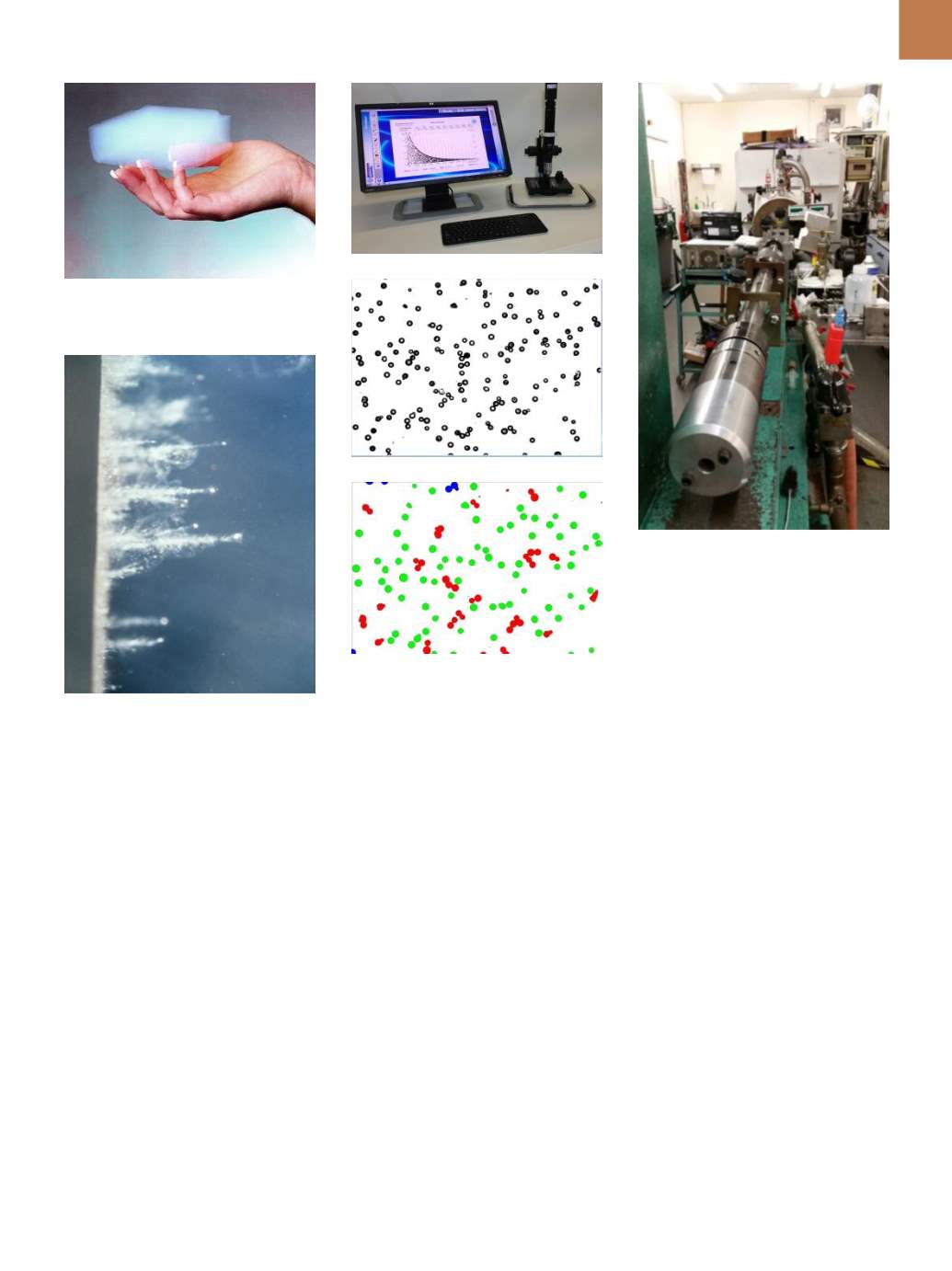

A D V A N C E D
M A T E R I A L S
&
P R O C E S S E S |
M A Y
2 0 1 6
2 9
using tweezers—a time-consuming
procedure that made exact size match-
ing difficult. This, in turn, resulted in
questionable reproducibility. Use of
monodisperse (single size) glass beads
enabled a much larger number of beads
to be used at a size distribution signifi-
cantly narrower than could ever be pro-
duced manually. Further, the extensive
size range made it possible to replicate
almost any cosmic dust particle.
These
monodisperse
micro-
spheres are prepared using a number
of different methods including sieving
and sedimentation. However, because
glass microspheres are manufactured
from an industrial melt process, the
possibility exists for some irregular
particles (cullet) not to be spherulized
in the heating column. Therefore, they
must be removed from the bulk of the
product.
The principle analytical tool, the
ShapeSizer Optical Image Analyzer
(Fig. 5), is essentially a computer con-
trolled, high power microscope with
magnifications up to 80 nm pixel, which
was specifically designed to measure
and quantify particle size and shape.
All measurements are traceable
to the National Institute of Standards
and Technology (NIST), Gaithersburg,
Md., and have a unique validation pro-
cedure that guarantees repeatability.
It is therefore possible to monitor the
progress of the classification and shape
sorting in the manufacturing process.
The microspheres used in this experi-
ment were 177
±
3.7
μ
m, with 90% of the
distribution falling between 171 and
184
μ
m.
The hypervelocity gun features a
muzzle velocity up to 14,000 mph and
can fire simulated cosmic dust parti-
cles of sizes up to ~1 mm (Fig. 6). The
gun is a two-stage device comprising
a high pressure chamber followed by
an evacuated chamber to simulate the
space environment. In between the
two chambers sits a microcartridge,
measuring 4.3 mm diameter by 4.5 mm
long, which contains microspheres that
Fig. 3 —
Aerogel foam for capturing cosmic
dust.
Fig. 4 —
Cosmic dust penetrating aerogel
foam.
COSMIC DUST SIMULATION
Although cosmic dust is com-
prised of a range of different types of
mineral materials, it is mostly glassy in
nature, making glass microspheres a
useful experimentation model. In order
to determine the appropriate speed
to mimic conditions in space, micro-
spheres closest in size to the particles
recovered from space were used. These
microspheres were then fired into aero-
gel foam using a hypervelocity gas gun
developed at the University of Kent
(Fig. 4). The muzzle velocity was varied
until it matched the penetration depth
observed from the particles collected in
space.
During the initial work conduct-
ed at the University of Kent, individual
glass beads of similar size were col-
lected from broader sized glass beads
Fig. 5 —
ShapeSizer microscope (a), live
image (b), and digitized image (c); touching
and edge particles not counted.
Fig. 6 —
Hypervelocity gas gun.
(a)
(b)
(c)


















